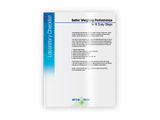To use all functions of this page, please activate cookies in your browser.
my.chemeurope.com
With an accout for my.chemeurope.com you can always see everything at a glance – and you can configure your own website and individual newsletter.
- My watch list
- My saved searches
- My saved topics
- My newsletter
Datura
Datura is a genus of 12-15 species of vespertine flowering plants belonging to the family Solanaceae. Their exact natural distribution is uncertain, due to extensive cultivation and naturalization throughout the temperate and tropical regions of the globe, but is most likely restricted to the Americas, from the United States south through Mexico (where the highest species diversity occurs) to the mid-latitudes of South America. Some species are reported by some authorities to be native to China, but this is not accepted by the Flora of China, where the three species present are treated as introductions from the Americas. It also grows naturally throughout India and most of Australia. According to the old ayurvedic medicinal system (at least since 2000 BC) in India, this plant has versatile uses in medicinal preparations. Additional recommended knowledge
DescriptionDatura is a woody-stalked, leafy herb growing up to 2 meters. It produces spiney seed pods and large white or purple trumpet-shaped flowers that face upward. Most parts of the plant contain atropine, scopolamine, and hyoscyamine. It has a long history of use both in S. America and Europe and is known for causing delirious states and poisonings in uninformed users. Common names include jimson weed, Hell's Bells, Devil's weed, Devil's cucumber, thorn-apple (from the spiny fruit), pricklyburr (similarly), and somewhat paradoxically, both angel's trumpet and devil's trumpet,(from their large trumpet-shaped flowers), or as Nathaniel Hawthorne refers to it in the the Scarlet Letter apple-Peru. The word Datura comes from Hindi dhatūrā (thorn apple); record of this name dates back only to 1662 (OED). The Hindi derives this word from Sanskrit vedic literature that dates to long before 2000 BC[citation needed]. They are large, vigorous annual plants or short-lived perennial plants, growing to 1-3 m tall. The leaves are alternate, 10-20 cm long and 5-18 cm broad, with a lobed or toothed margin. The flowers are erect or spreading (not pendulous), trumpet-shaped, 5-20 cm long and 4-12 cm broad at the mouth; color varies from white to yellow, pink, and pale purple. The fruit is a spiny capsule 4-10 cm long and 2-6 cm broad, splitting open when ripe to release the numerous seeds. Datura species are used as food plants by the larvae of some Lepidoptera species including Hypercompe indecisa. Species
Some species formerly included in Datura are now classified in the separate genus Brugmansia; this genus differs in being woody, making shrubs or small trees, and in having pendulous flowers. Other related genera include Hyoscyamus and Atropa. its also used by sadhus as prayer flower for lord shiva Cultivation and usesDatura contains the alkaloids scopolamine and atropine and has long been used as a poison and hallucinogen. The dose-response curve for the combination of alkaloids is very[citation needed] steep, so people who consume datura can easily take a potentially fatal overdose, hence its use as a poison. In the 1990s and 2000s, the United States media contained stories of adolescents and young adults dying or becoming seriously ill from intentionally ingesting datura.[1] Records of useDatura stramonium is also called jimsonweed. This name comes from the town of Jamestown, Virginia. Various versions of the story exist, but in the most common version, British soldiers sent to quell Bacon's Rebellion of 1676 were accidentally served this unfamiliar plant as food, causing many to be incapacitated for 11 days. Datura wrightii, also called sacred datura or western jimsonweed, has similar effects. Chaitanya Charitamrita, a 16th century biography of the saint Caitanya who was known for his fervent religious ecstasies, describes an incident (2.18.165, 183) where Muslim soldiers, unable to comprehend his state of trance, apprehend four of his companions on suspicion of their poisoning him with dhuturā with an aim to loot his possessions. Upon regaining consciousness, Caitanya attributes his trance episode to epilepsy. The effects of Datura can include a complete inability to differentiate reality from fantasy, blindness that lasts for days, and very bad "trips". Many experience accounts, generally quite negative, can be found at www.erowid.org. Numerous stories of datura-related deaths and critical illnesses can be found here. Cultural references
In literature
In music
In film
In games
Notes and referencesCategories: Deliriants | Entheogens |
|||||||||||||||||||||
| This article is licensed under the GNU Free Documentation License. It uses material from the Wikipedia article "Datura". A list of authors is available in Wikipedia. |
- Effective conversion of methane oxidation by a new copper zeolite - Bio-inspired catalyst paves the way to 'gas-to-liquid'-technologies
- A spintronic view of the effect of chiral molecules - Researchers verified the chiral-induced spin selectivity effect, i.e., the influence of chiral molecules on spin, using spintronic analytical techniques







